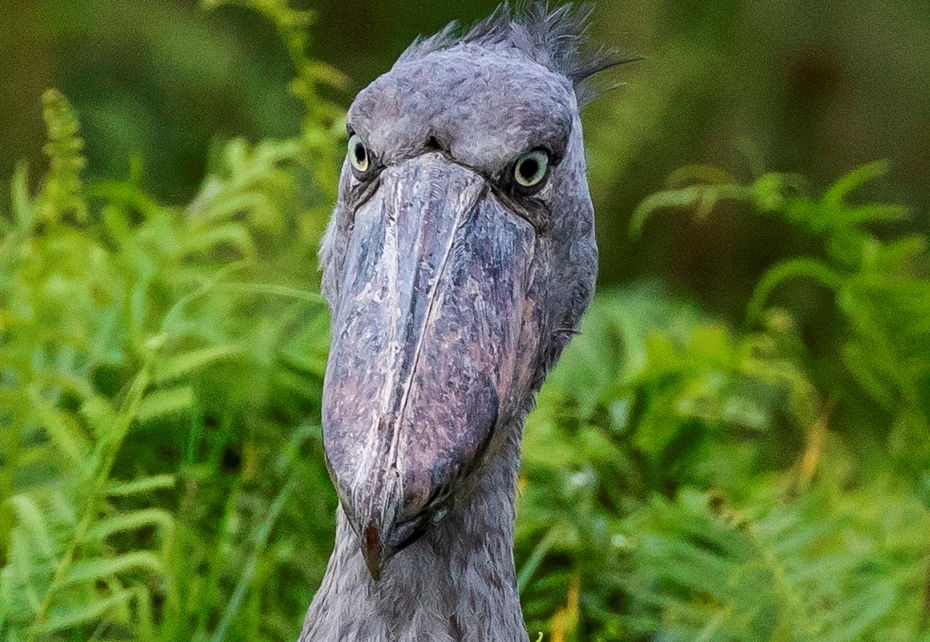This dinosaur looking bird scores eighth position among Africa’s largest storks. The Shoebill stork ( https://en.wikipedia.org/wiki/Shoebill ) also famously known as the “whale head” ripped its iconic name from the evidently shoe-like bill on the head. It belongs to the class of Aves and family of the Balaenicipitidae. A Shoebill is such a peculiar bird for instance; at close range, it has a distinctive blue-grey coloration. It is still unusual during flight for instance; the rare bill goes invisible. You will always distinguish it from other birds in its range considering the size and wingspan. A male shoebill stork weighs heavier than the female; 7kgs and 4.9kgs respectively. Its huge-bulbous bill is such a big deal that we must acknowledge often. Did you know that the shoe bill has the third longest bill after that of the pelicans?
The shoebills are senior citizens of the Central tropical African Swamps ranging from South Sudan through D.R.C-Rwanda to Uganda and a few other countries in the same territory. They cherish this environment for abundance of lungfish (best dish) and papyrus. These birds are non-migratory, as courtesy demands; we should jealously protect their habitats. They thrive in extensive and dense freshwater marches, it’s little wonder that the shoebills opt to spend a lifetime in literally undisturbed papyrus and reed beds. Shoebills make slow movements and often standstill for long periods. They are also noted to be reactive for instance; upon disturbance by humans, nests may be entirely abandoned. We appreciate their smart hunting technique, for instance; they reluctantly pose to catch easy prey in poorly oxygenated waters when the fish rush unto the surface to breathe for dear life but only to meet a well planned death. They exhibit another world-wonder for instance; perching on floating vegetation as though they were weightless, given their huge sizes. That’s so stamina like; they grace us with the imagination of what a giant jacana would like! Did you also know that shoebills are naturally solitary? Breeding pairs work together to protect their eggs. Lastly the shoebills are generally silent but perform bill-clattering sounds while in the nests. Today about 8000 individuals are still thriving in our undisturbed wetlands.
Peculiar facts about the Shoebill stork:
Shoebill chicks will have to murder each other as a survival technique!
Shoebills decapitate their prey during feeding, that’s how it is!
Shoebill devours stuff that you only dream of as nightmares, just think about most reptiles that cause chills down your soul; these guys put all of them to waste!
Shoebills have such lasting patience, the kind you come to realize when it’s too late, when they launch an attack.
Shoebills can make an arousing eye blink. Actually, they can literally look you in the eye.
Shoebills embrace a solitary life style and barely make any noise. We thought to our selves; these guys are ‘something!’ An allegation suggests that its seldom sound can be compared to that of a machine gun.
Shoebills sh*t on themselves to keep cool. Wait a minute, what!?





